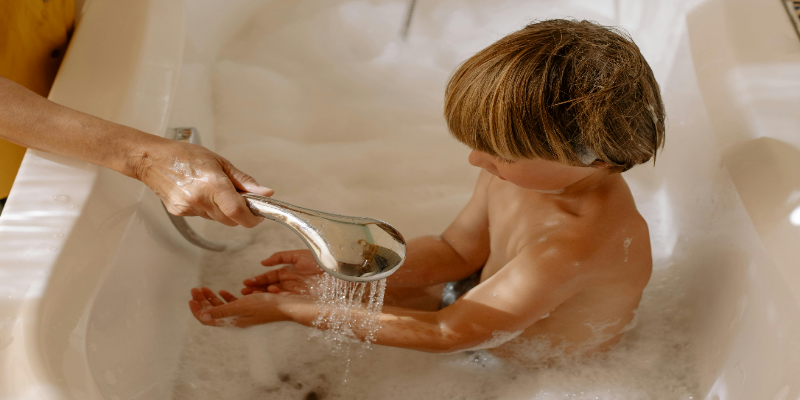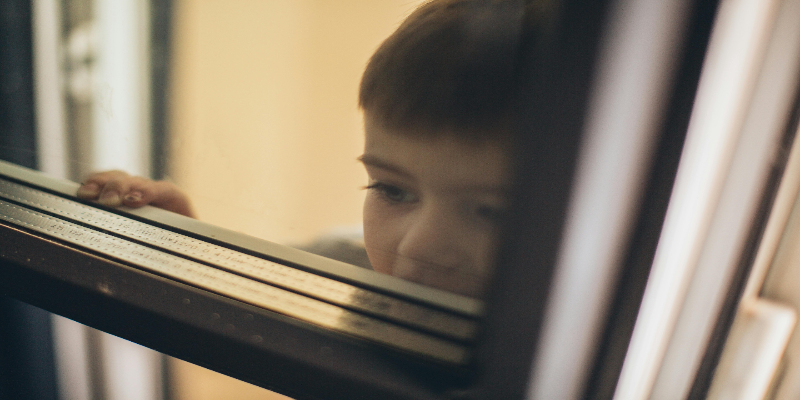Home Safety Checklist: Protecting Your Child from Accidents
Have you experienced any home child home accidents? Sometimes, it might be serious. Over one-third of childhood injuries and fatalities occur within the home environment. Young children are at the greatest risk, as they predominantly remain at home. Some accidents predominantly transpire in areas with water (bathrooms, kitchens, swimming pools, hot tubs), heat or fire sources, toxic substances, fall hazards, and/or choking risks.
While you can enhance the safety of your house for children, the potential of accidents may be slim. Therefore, always supervise children, maintain a first aid box, and acquire basic first aid knowledge. Ensuring the safety of your house is crucial when you have children of any age.
Home Safety Checklist
Are you ready for ultimate safety at home? This checklist will help you identify elements of your residence that may elevate your probability of falling and encourage proactive steps, starting from bathing safety to firearm safety.

Bathing Safety
Do not leave a youngster unattended in or near water, including in the bathtub.
Install a non-skid mat or non-slip strips in the bathtub or shower.
Ensure the toilet lid remains closed and utilize a lid lock.
Store buckets in an empty state and out of reach.
Drain kiddie pools while not in use.
Ensure your children wear a life jacket on boats, at docks, near lakes, rivers, and the ocean.
Enclosed are all perimeters of swimming pools and hot tubs with fencing.
Fire Safety
Install a smoke detector on every floor and outside each bedroom. And replace the batteries biannually.
Develop a fire evacuation strategy. Engage in practice.
Install barriers around heaters and fireplaces.
Purchase flame-resistant sleepwear for youngsters.
Ensure matches and lighters are inaccessible.
Ensure one window in each room is readily accessible as a fire escape.
Utilize cool night lights. Maintain distance from curtains and bed linens.
You can adjust your water heater to 120°F (49°C), lower, or between the low and medium settings.
Utilize a cool-mist humidifier (as opposed to a vaporizer).
Electrical Safety
Insert plastic plug covers into unutilized outlets.
Safeguard outlets using ground fault circuit interrupters.
Rectify damaged wires and insecure plugs.
Ensure that wires and power strips are inaccessible.
Incidents of falling
Ensure your infant is supervised on a changing table, sofa, bed, or other elevated surface.
Continuously reposition items within proximity throughout diaper changes for your infant.
Position a carpet or a non-slip rug beneath the crib and change the table.

Windows/Entrances Safety
Install doorknob covers on doors to prevent toddlers from accessing hazardous rooms or exiting the house independently.
Use cordless window treatments wherever feasible. If infeasible, sever window blinds or curtain cords and employ safety tassels. Ensure that cords are positioned outside the reach of children.
Employ safety glazing on glass doors, tabletops, and panels.
Maintain a safe distance between balloons and plastic bags from youngsters three years or younger.
Select Mylar (foil) balloons rather than latex ones. Latex balloons provide a choking hazard to children of all ages, as the latex substance can expand and adhere to a child's throat, obstructing their airway.
Refrain from using diminutive toys and those with little components for infants and young children. If an object may be accommodated within a toilet paper tube, it is excessively diminutive for them.
Eliminate crib gyms and suspended toys from the crib once your infant can rise onto their hands and knees.
Note: Do not provide the following products to children under 4 years of age: pieces of hard fruit or vegetables, grapes, hot dogs, sausages, popcorn, chunks of cheese or meat, round sweets, or nuts. Acquire additional knowledge regarding the prevention of choking.
Play Time Safety
Select toys appropriate for your child's age and abilities.
Furnishings Conceal acute edges and corners.
Install flat-screen televisions on the wall—position box-style on low, stable furnishings. Stabilize bookcases and other substantial furniture with wall brackets.
Ensure that the furniture is free from lead-based paint.
Verify whether any utilized baby furniture and equipment has been subject to recall.
Kitchen Safety
Use the rear burners of the stove and orient the pot handles towards the back.
Use knob covers or a stove shield to prevent children from activating the oven.
Store scissors, knives, and other sharp implements in secured or elevated cabinets.
Ensure that hot meals, beverages, and equipment are inaccessible.
Maintain a distance between seats and step stools from counters and the stove.
Ensure that large appliances (such as the stove and refrigerator) are secured to prevent them from being toppled.
Maintain a functional fire extinguisher in proximity. Ensure that older children and adults know its appropriate usage and timing.
Firearm Safety
Always store weapons in an unloaded condition.
Secure firearms in a firearm safe, lock box, or with a trigger or cable lock.
Store and secure ammo separately from firearms.
Wherever feasible, avoid utilizing locking mechanisms that require keys. Instead, keep the key to your locking device or a secure location inaccessible to children and others.
Remove firearms from your residence if a family member is experiencing depression, suicide ideation, or substance abuse issues.





